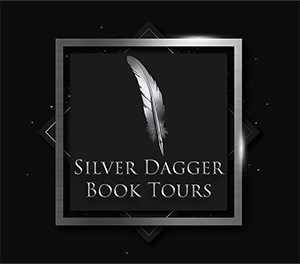THE MARK OF THE SALAMANDER is the first in The Island of Angels series: a two-book saga that tells the epic story and secret history of England’s coming of age during the Elizabethan era.
The Mark of the Salamander
The Island of Angels Book One
by Justin Newland
Genre: Historical Fiction
1575: Nelan Michaels is a young Flemish man fleeing religious persecution in the Spanish Netherlands. Settling in Mortlake outside London, he studies under Queen Elizabeth’s court astrologer, conjuring a bright future – until he’s wrongly accused of murder. Forced into the life of a fugitive, Nelan is dramatically pressed into the crew of the Golden Hind.
Thrust into a strange new world on board Francis Drake’s vessel, Nelan sails the seas on a voyage to discover discovery itself. Encountering mutiny, ancient tribes and hordes of treasure, Nelan must explore and master his own mystical powers – including the Mark of the Salamander, the mysterious spirit of fire.
The Mark of the Salamander is the first in The Island of Angels series: a two-book saga that tells the epic story and secret history of England’s coming of age during the Elizabethan era.
Amazon * Apple * B&N * Author’s Site * Bookbub * Goodreads
JUSTIN NEWLAND’s novels represent an innovative blend of genres from historical adventure to supernatural thriller and magical realism.
Undeterred by the award of a Doctorate in Mathematics from Imperial College, London, he conceived his debut novel, The Genes of Isis (ISBN 9781789014860, Matador, 2018), an epic fantasy set under Ancient Egyptian skies.
His second book is a historical thriller, The Old Dragon’s Head (ISBN 9781789015829, Matador, 2018), and is set in Ming Dynasty China in the shadows of the Great Wall.
The Coronation (ISBN 9781838591885, Matador, 2019) is an historical adventure and speculates on the genesis of the most important event in the modern world – the Industrial Revolution.
The Abdication (ISBN 9781800463950, Matador, 2021) is a mystery thriller in which a young woman confronts her faith in a higher purpose and what it means to abdicate that faith.
His latest is The Mark of the Salamander (ISBN 9781915853271, Book Guild, 2023) and is the first in a two-book series, The Island of Angels. Set in the Elizabethan era, it tells the epic tale of England’s coming of age.
The second in the series, The Midnight of Eights (ISBN 9781835740 330, Book Guild, 2024), charts of the uncanny coincidences that culminated in the repulse of the Spanish Armada and is due for publication in October.
Author, speaker and broadcaster, Justin gives talks to historical associations and libraries, appears on LitFest panels, and enjoys giving radio interviews.
He lives with his partner in plain sight of the Mendip Hills in Somerset, England.
Website * Facebook * X * Instagram * Bookbub * Amazon * Goodreads
GUEST POST
My historical fiction novel, The Mark of the Salamander, was published in October 2023. It’s the first in a two-book series, The Island of Angels, which tells the epic story and secret history of England’s coming of age during the Elizabethan era. Book two is out in October, 2024, and is entitled The Midnight of Eights.
This blog explores the some of the unwritten story of Sir Francis Drake’s voyage around the world, which features in the novel. It’s unwritten because Drake was only the second person who achieved this extraordinary feat of seamanship.
The first was Ferdinand Magellan, who achieved the same feat between 1519 and 1522. The main ship in Magellan’s fleet was the Nao Victoria or the Victory in English
When Drake set about designing his command ship, where did he look for a template? The obvious thing to do was to base his design on one that had worked before - namely, that of the Nao Victoria (see image of the replica of the ship).
Drake set sail from Plymouth Hoe in December 1577 with a fleet of five ships. Whereas today, a ship navigates using modern satellite technology, Drake had none of that. So how did he navigate the world’s oceans, when he, nor any other Englishman before him, had ever done so?
Drake had access to a rudimentary globe provided (see image), by the Flemish cartographer, Abraham Ortelius.
It shows the general lay of the land and the sea, but in itself would not be much use in navigating say, the treacherous seas of the Straights of Magellan.
He needed specific information about the sea currents and the winds, the lay of the shores and the weather patterns.
He did have some technological help, in the form of the astrolabe (see image), which was used for making astronomical measurements for navigation.
The planisphere astrolabe was used to calculate the position of the sun and prominent stars with respect to both the horizon and meridian.
But only Magellan had sailed that way around the globe before him, so how could Drake know how to navigate the world’s ocean? Well, he tapped into local knowledge, namely that provided by local pilots. A standard practice at the time was to beg, borrow or steal – depending on which way you look at it – the pilots from the local fishing vessels the fleet encountered. One of them was a man named Nuno da Silva, whose prolific local knowledge helped Drake sail across the South Atlantic from Africa to South America.
Remember as well that this was a time of high religious morals and profound belief in the intervention of the Almighty in affairs of the day. In other words, people were superstitious, and none more so than sailors.
Drake was effectively leading his 164 men and boys in the crew into the unknown, albeit the known unknown. Yes, he had some technological help, the astrolabe and the globe, the pilots and his own skills of seamanship. But he also relied on those that knew the way, and that had travelled the course before. No, not just the pilots, but the sea birds and the fish. Those creatures knew instinctively how to get the assistance of a tail wind, and the benefit of a sea current pushing them forward. I imagined that Drake did the same – and followed the flocks of sea birds and shoals of fish as they crossed from one continent to the other.
This is how I imagined Drake achieved this incredible feat, and one that could be said to have changed the course of English history.
Images:
The Nao Victoria
Rudimentary globe by the Flemish cartographer, Abraham Ortelius.
Astrolabe
Follow the tour HERE for special content and a giveaway!
Print copy of The Mark of the Salamander,
$10 Amazon
– 1 winner each!







Thanks for hosting this stop on the tour of my novel. Who would have thought that truth, or history, could be stranger than fiction?
ReplyDelete